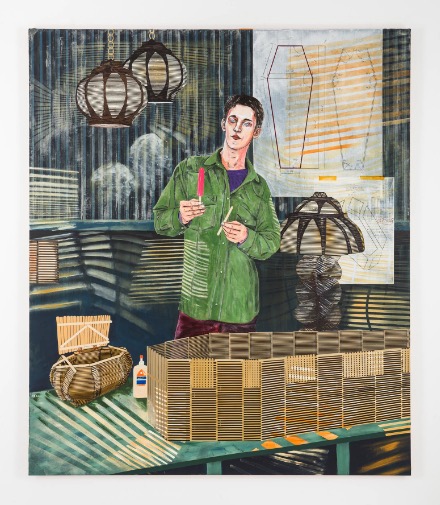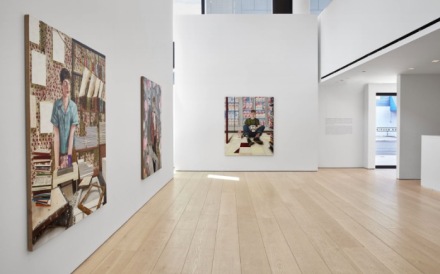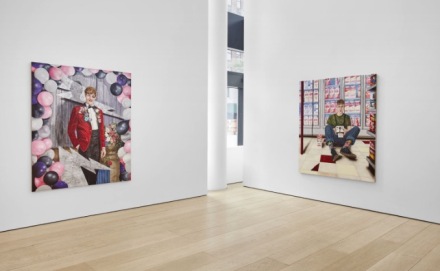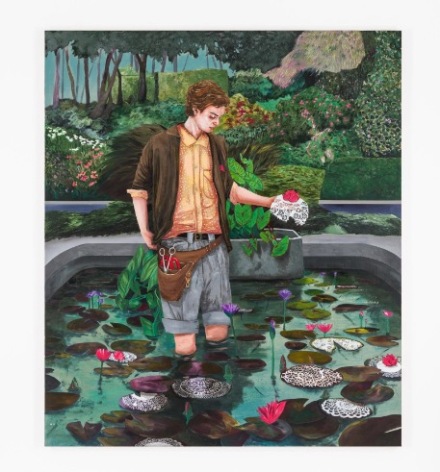
Hernan Bas, Conceptual artist #23 (Popsicle stick sculptor; a purist, he consumes his materials in devotion to his craft, leading to his inevitable last work) (2023), via Lehmann Maupin
Lehmann Maupin presents the latest works by Hernan Bas this summer; The Conceptualists: Vol. II, an exhibition of new work that continues a project begun in 2021. Bas is best known for his narratively rich scenes that feature a wide-range of references spanning art and literature, popular culture, kitsch, the occult, religion, and mythology. Across his works, Bas seeks to defamiliarize everyday experience through humor, revealing the surreal and absurd lurking beneath the mundane. In the Conceptualists series, Bas marries his personal appreciation of conceptual artists with his ongoing exploration of eccentricity.

Hernan Bas, The Conceptualists: Vol II (Installation View), via Lehmann Maupin
Each work in Bas’s Conceptualists series depicts a fictive conceptual artist enraptured by his eccentric creative pursuits. In Conceptual artist #22 (The sole source for his prized homemade pulp paper is vintage Pulp Fiction), Bas envisions an artist who makes paper from Harlequin romance novels (turning one form of pulp into another), while in Conceptual artist #18 (Spirited by a passion for urban legends, he fabricates roadside memorials from which to hitchhike from), Bas imagines a performance-based artist who erects fake road-side memorials and hitch-hikes from one to another.

Hernan Bas, The Conceptualists: Vol II (Installation View), via Lehmann Maupin

Hernan Bas, Conceptual artist #17 (With the aid of scissors, paper doilies and origami he elevates lily ponds to attract potential princes) (2023), via Lehmann Maupin
Throughout The Conceptualists, art haunts everyday existence. Conceptual artist #19 (A child of the 80’s, he places his Polaroid self portraits in a familiar spot whenever he’s feeling lost), contains a number of subtle references to Andy Warhol. The many milk cartons—which Bas has silkscreened onto the canvas—recall Warhol’s silkscreens of mass-produced goods (such as soup cans and soda bottles), while the Polaroid camera in the subject’s hands evokes his iconic Polaroid images. Perhaps the work’s most emphatic homage can be seen in the figure’s socks, where a pattern of skulls references Warhol’s early Death and Disaster series. Here and across this larger body of work, Bas’s sensitivity to art history results not in an insular investigation of artmaking, but rather in an expansive consideration of art’s capacity to permeate the collective cultural imagination.
The show closes June 17th.
– C. Rhinehart
Read more
Lehmann Maupin [Exhibtion Site]



